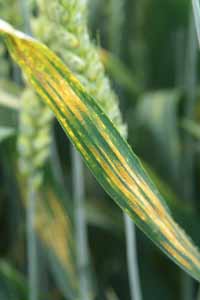CropWorld 2010: Partial yellow rust resistance could be lower risk strategy for wheat

Stacking genes that provide partial resistance to yellow rust could provide an alternative strategy to providing wheat with resistance to the disease, Cristobal Uaoy from the John Innes Centre outlined at the British Crop Production Council’s Crop World conference.
Current resistance was built on race-specific major genes that conferred complete immunity to the disease, he explained. “But is a high-risk strategy, which is often overcome as seen with the ‘Solstice’ race recently.”
When a major gene was overcome, varieties typically were not grown soon after and also importantly for breeders, the loss of all the varieties in the pipeline with the same source of resistance, he said.
Research was now identifying genes responsible for providing partial non-race specific resistance to yellow rust. “These genes give partial resistance, so the plant still gets yellow rust, but it is slow-rusting.
“The resistance is developmentally regulated – the resistance gets better as the plant gets older – and also temperature regulated.”
That meant the plant became susceptible at higher temperatures, typically 25C or higher, he explained. But there was also an interaction with the pathogen population. “For example, in the USA the plant becomes completely susceptible at 17C, whereas if you grow the variety in the UK the gene is effective up to 25C.”
The genes were being bred into varieties, and while a single gene was not enough to give complete resistance, the slow rusting nature of the variety meant it yielded higher. “We’ve also seen if you combine partial resistance genes you have an additive effect, so we’re looking at stacks of partial resistance.
“There is still a lot to understand though. For example, we know when you’re using major genes you’re playing Russian roulette, but are partial resistance genes commercially viable?
“It is likely the answer is a combination of major and partial resistance genes, but we need to find out what is the right balance.”

